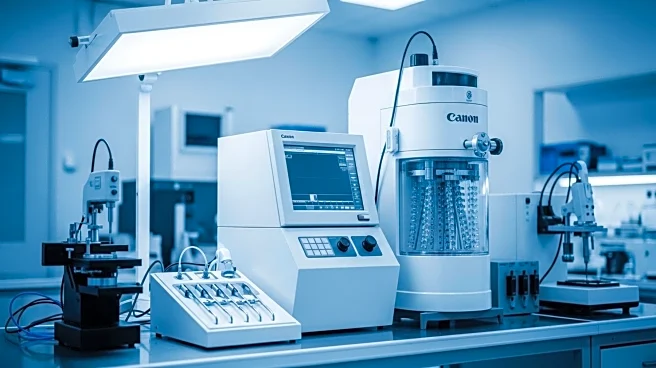What's Happening?
MiraDx, a molecular diagnostics company, has announced new research conducted by UCLA and other academic centers, which will be presented at the 2025 American Society for Radiation Oncology (ASTRO) Annual Meeting. The study utilized MiraDx's PROSTOX ultra test to identify prostate cancer patients at higher risk of late grade ≥ 2 genitourinary (GU) toxicity from stereotactic body radiation therapy (SBRT). SBRT is a common treatment for localized prostate cancer, but some patients experience significant late GU toxicity. The study found that patients identified as genetically at high risk for toxicity after SBRT often chose alternative radiation therapies, which did not increase their risk of toxicity. Over 80% of patients who chose SBRT despite high-risk results experienced grade 2 or higher late GU toxicity, confirming the test's predictive ability.
Why It's Important?
This research is significant as it advances personalized cancer treatment by allowing patients and clinicians to make informed decisions based on genetic risk factors. The ability to predict treatment-related outcomes can lead to safer and more effective radiation therapy choices, potentially reducing the incidence of severe side effects. This development could influence treatment protocols and improve quality of life for prostate cancer patients, highlighting the importance of genetic testing in oncology.
What's Next?
The findings may lead to broader adoption of genetic testing in radiation therapy decision-making, encouraging healthcare providers to integrate such diagnostics into standard practice. Further research and clinical trials could expand the application of PROSTOX ultra testing to other cancer types and treatment regimens, enhancing personalized medicine approaches.
Beyond the Headlines
The study underscores the ethical importance of personalized medicine, where treatment is tailored to individual genetic profiles, potentially reducing unnecessary suffering from adverse effects. It also raises questions about access to advanced diagnostics and the need for healthcare systems to support such innovations.












